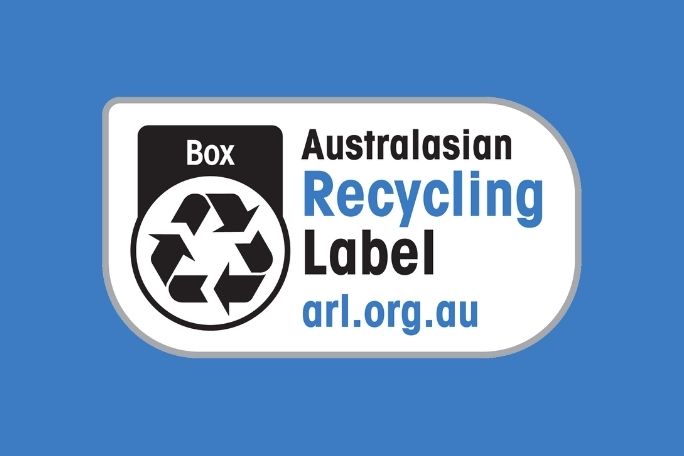Lesson summary
This lesson is designed to help your students dig deep into the new recycling labelling system, the Australasian Recycling Label (ARL) scheme, and share this knowledge with others. Student learning from this lesson will be enhanced by having completed the flipped classroom lesson prior to starting this lesson.
In this lesson, students explore solutions to waste problems in their school or home. They begin by exploring their prior knowledge on sustainability (Years 7 & 8) or life cycle thinking (Years 9 & 10), before reviewing learning from the previous lesson. Students are then introduced to the waste hierarchy and analyse several organisations and schemes addressing waste and place them on the waste hierarchy. Students then work collaboratively to identify a waste problem in their school or home and develop a solution to this problem. Students create a pitch to share their ideas with the class.
Learning intentions:
Students will...
- recognise the Australasian Recycling Label
- understand the waste hierarchy and how it can be used to guide solutions to waste problems
- understand how waste solutions meet sustainability (Years 7 & 8) and life cycle thinking (Years 9 & 10) criteria.
Success criteria:
Students can...
- identify a waste problem and develop a solution
- analyse their own ideas and the ideas of others
- create a pitch
- work collaboratively.
Lesson guides and printables
Lesson details
Curriculum mapping
Australian Curriculum content descriptions:
Years 7 & 8 Design and Technology:
- Investigate the ways in which products, services and environments evolve locally, regionally and globally and how competing factors including social, ethical and sustainability considerations are prioritised in the development of technologies and designed solutions for preferred futures (ACTDEK029)
- Analyse ways to produce designed solutions through selecting and combining characteristics and properties of materials, systems, components, tools and equipment (ACTDEK034)
- Critique needs or opportunities for designing and investigate, analyse and select from a range of materials, components, tools, equipment and processes to develop design ideas (ACTDEP035)
- Generate, develop, test and communicate design ideas, plans and processes for various audiences using appropriate technical terms and technologies including graphical representation techniques (ACTDEP036)
Years 9 & 10 Design and Technology:
- Critically analyse factors, including social, ethical and sustainability considerations, that impact on designed solutions for global preferred futures and the complex design and production processes involved (ACTDEK040)
- Explain how products, services and environments evolve with consideration of preferred futures and the impact of emerging technologies on design decisions (ACTDEK041)
- Critique needs or opportunities to develop design briefs and investigate and select an increasingly sophisticated range of materials, systems, components, tools and equipment to develop design ideas (ACTDEP048)
- Develop, modify and communicate design ideas by applying design thinking, creativity, innovation and enterprise skills of increasing sophistication (ACTDEP049)
Syllabus outcomes: T4.1.1,T4.1.2, T4.1.3, T4.2.1, T4.2.2, T4.4.1, T4.6.2, T4.3.1, T4.3.2, T4.5.2, D&T5.1.1, D&T5.2.1, D&T5.3.1, D&T5.3.2, D&T5.4.1, D&T5.5.1
General capabilities: Critical and Creative Thinking
Cross-curriculum priority: Sustainability OI.8.
Relevant parts of Year 7 & 8 Design and Technologies achievement standards: Students explain factors that influence the design of products, services and environments to meet present and future needs. Students create designed solutions for each of the prescribed technologies contexts based on an evaluation of needs or opportunities. They develop criteria for success, including sustainability considerations, and use these to judge the suitability of their ideas and designed solutions and processes. They create and adapt design ideas, make considered decisions and communicate to different audiences using appropriate technical terms and a range of technologies and graphical representation techniques.
Relevant parts of Year 9 & 10 Design and Technologies achievement standards: Students explain how people working in design and technologies occupations consider factors that impact on design decisions and the technologies used to produce products, services and environments. Students create designed solutions for one or more of the technologies contexts based on a critical evaluation of needs or opportunities. They establish detailed criteria for success, including sustainability considerations, and use these to evaluate their ideas and designed solutions and processes. Students communicate and document projects, including marketing for a range of audiences.
This lesson is part of the wider unit of work National Recycling Week 7 & 8
Time required: 100+ mins
Level of teacher scaffolding: Medium – oversee class discussions and lead students in activities
Resources required
- Student Worksheets – one copy per student
Skills
This lesson is designed to build students’ competencies in the following skills:
- Adaptability
- Communication
- Collaboration
- Creativity
- Critical thinking
- Problem solving
Additional info
Planet Ark’s National Recycling Week started in 1996 to bring a national focus to the environmental benefits of recycling. This highly regarded annual campaign continues to educate and stimulate behaviour change by promoting kerbside, industrial and community recycling initiative. It also gives people the tools to minimise waste and manage material resources responsibly at home, work and school. In partnership with Planet Ark, we have developed lessons from early learning through to year 10 to help educators bring these important topics into the classroom.
National Recycling Week is held in the second week of November each year but you can recycle all year-round with these lessons which were designed to be used at any time. Click here to find out more about National Recycling Week and the Schools Recycle Right Challenge.


Welcome back!
Don't have an account yet?
Log in with:
By signing up to Cool.org you consent and agree to Cool's privacy policy to
store, manage and process your personal information. To read more, please see
our privacy policy here(Opens in new tab).
Create your free Cool.org account.
Many of our resources are free, with an option to upgrade to Cool+ for premium content.
Already have an account?
Sign up with:
By signing up to Cool.org you consent and agree to Cool's privacy policy to
store, manage and process your personal information. To read more, please see
our privacy policy here(Opens in new tab).